Quantum Sampling Advantage
How to prove it and does it matter?


The 26th International Annual Symposium on Computational Science and Engineering
20 Jul 2023
Ninnat Dangniam
The Institute for Fundamental Study (IF)
Naresuan University
PC: Google Quantum AI
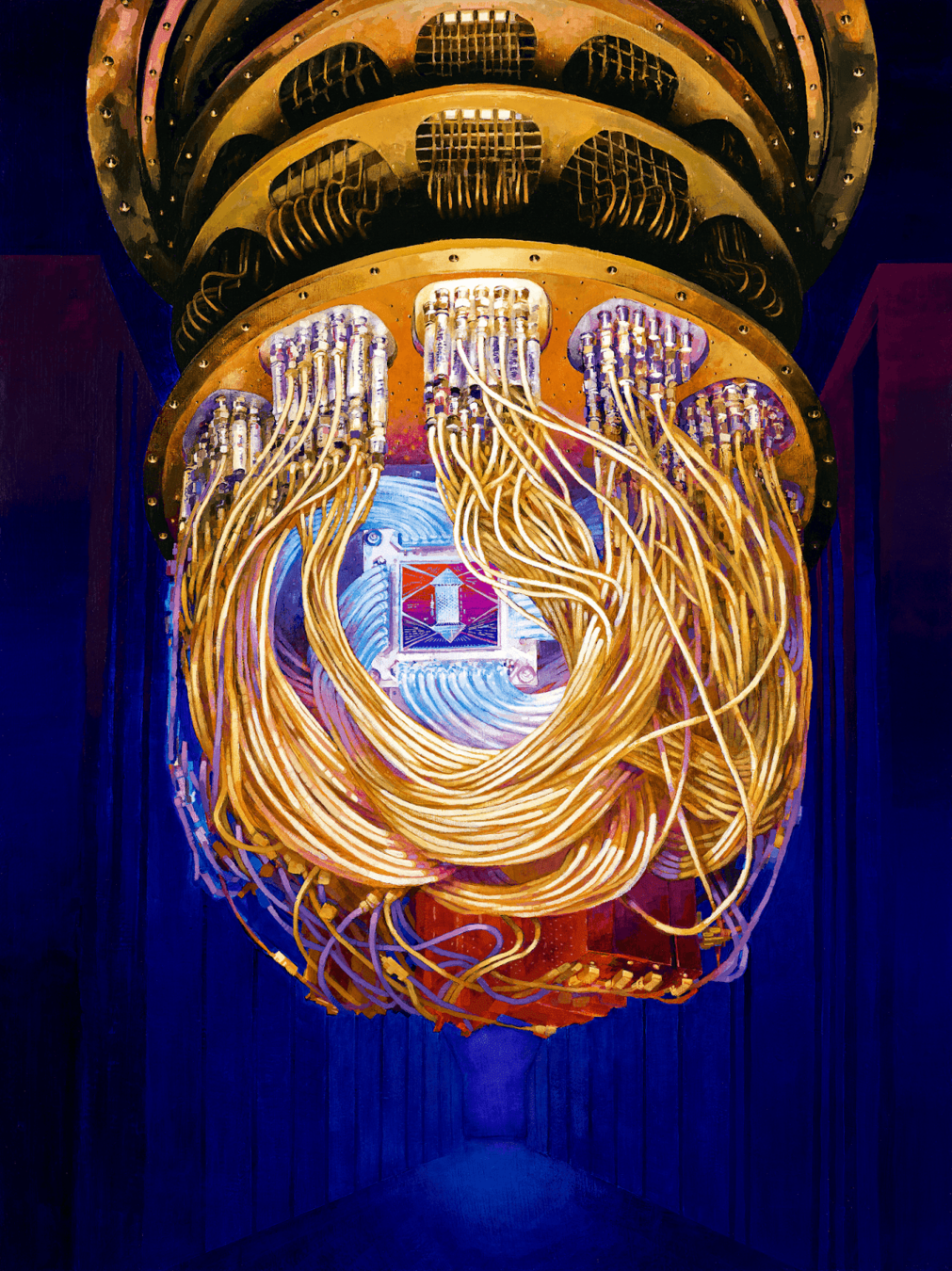

- Introduction - What is a simulation?
- Case I: Periodically-driven thermalized quantum systems
- Case II: Fermion Sampling
- Does it matter?
Outline
Quantum Advantage
- Computational quantum advantage, or quantum supremacy, refers to the ability of a quantum system to perform a task that classical computers cannot, regardless of whether the task is useful
- Certain sampling tasks provide provable quantum advantages based on a plausible complexity-theoretic assumption (but weaker than P \(\neq\) NP).
- Quantum-sampling-advantage tasks are very different in nature from e.g. fast integer factorization using Shor's algorithm

Given an initial state \(|\psi\rangle\) and a family of unitary time evolutions \(\{U_{\alpha}\}_{\alpha}\),
are the \(U_{\alpha}|\psi\rangle\)'s hard to simulate on a classical computer?
Quantum advantage (informal)
String of \(n\) bits

Classical vs Quantum circuit
Output distribution over \(2^n\) bitstrings \(p({\bf x}) = p_{\bf x}\)

String of \(n\) qubits
Output distribution over \(2^n\) bitstrings \(p({\bf x}) = p_{\bf x}\)

Classical vs Quantum circuit

Output distribution over \(2^n\) bitstrings \(p({\bf x}) = p_{\bf x}\)
The result of the coin flips are just hidden bitstrings that can be included as extra inputs

Strong vs Weak Simulation


Strong simulation
Weak simulation
Can compute \(p_{\bf x}\)
Can sample from \(p\)
In practice, there need to be some notions of errors
In this talk, I will use these definitions of strong and weak simulation unless stated otherwise
Relative error
Additive error
Given an initial state \(|\psi\rangle\) and a family of unitary time evolutions \(\{U_{\alpha}\}_{\alpha}\), are the \(U_{\alpha}|\psi\rangle\)'s hard to simulate on a classical computer?
Given an initial state \(|\psi\rangle\) and a family of polynomial-depth quantum circuits \(\{U_{\alpha}\}_{\alpha}\), can there be a classical machine that approximately samples from \(p_{\bf x} = |\langle{\bf x}|U_{\alpha}|\psi\rangle|^2\) in poly\((n,\epsilon^{-1})\) time?
(Quantum sampling advantage)
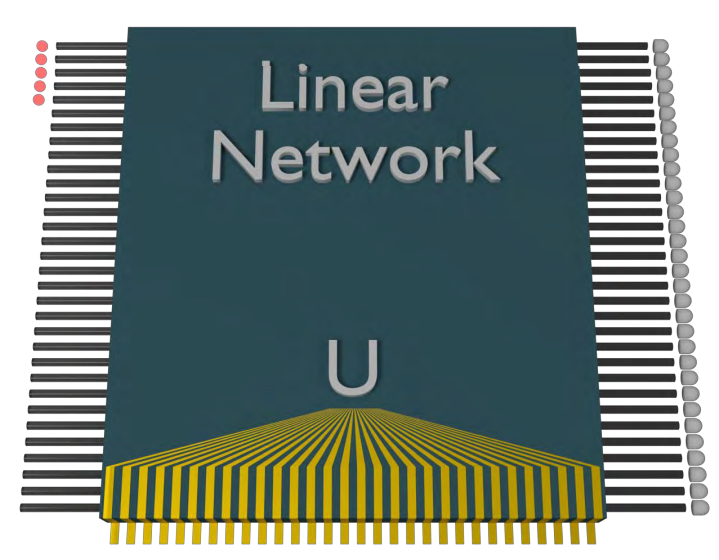

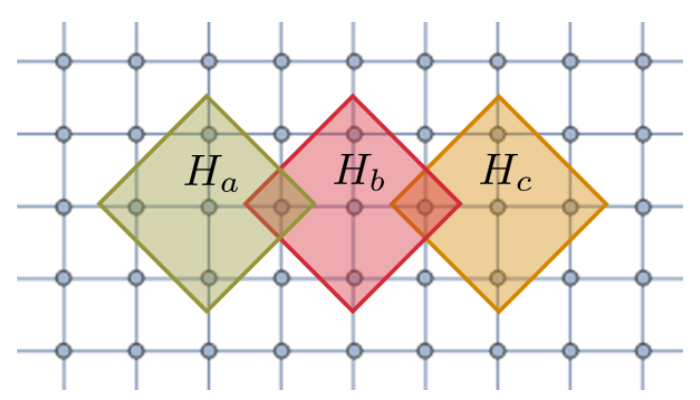
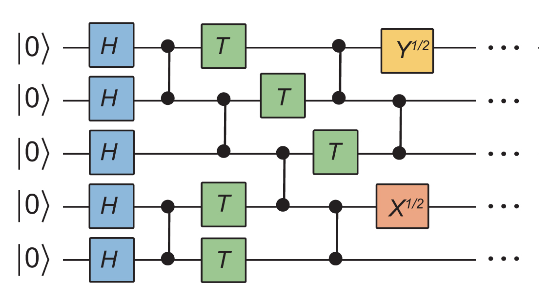
Boson sampling
Commuting circuit sampling
Random circuit sampling (RCS)
Instantaneous quantum polynomial (IQP)
Aaronson and Arkhipov, STOC'11
Bremner et al., Proc. R. Soc. A (2011)
Bremner et al., PRL (2016)
Boixo et al., Nat. Phys. (2018)
Bouland et al., Nat. Phys. (2018)
Quantum simulators
Translation-invariant Hamiltonians
Bermejo-Vega et al., PRX (2018)
Haferkamp et al., PRL (2020)
Novo et al., Quantum (2021)
Energy measurement

MBQC

Difficulty
P: problems solvable in polynomial time
- Eulerian cycle
- Multiplication
- Primality testing
NP: problems checkable in polynomial time
- Hamiltonian cycle
- Traveling salesman
- Packing
- Graph coloring
#P: counting the number of solutions to an NP problem
BQP: problems solvable in polynomial time on a quantum computer
- Factoring
- Discrete log
- Jones polynomial
Proof of Classical Intractability
Proof of Classical Intractability
Given \(|\psi\rangle, \{U_{\alpha}\}_{\alpha}\)
Classical sampler \(\mathcal{C}\) for all \(U_{\alpha}\)
Weak simulation
Strong simulation
Anti-concentration of \(p_{\bf 0}(U_{\alpha})\)
Ability to approximately compute \(p_{\bf 0} = |\langle {\bf 0}|U_{\alpha}|\psi\rangle|^2\) for most \(U_{\alpha}\)

Collapse of the polynomial hierarchy if the RHS is a #P-hard problem
Anti-concentration
To turn relative error to additive error, we need most probabilities to be large
Average-Case Hardness
- Average-case hardness for Boson Sampling originates from the argument for average-case hardness to compute the permanent via polynomial interpolation (Lipton 1991).
- Bouland et al., Nat. Phys. (2018) and Movassagh 2019 import the argument to Random Circuit Sampling
Worst-case hardness of approximately computing \(p_{\bf 0}(U_{\alpha})\)
Worst-to-average-case reduction
Hardness of approximately computing \(p_{\bf 0}(U_{\alpha})\) for most \(U_{\alpha}\)
Easy to argue based on existing results in quantum computing
Jirawat Tangpanitanon, Supanut Thanasilp, Marc-Antoine Lemonde, ND, Dimitris G. Angelakis, Quantum Sci. Technol. 8, 025019 (2023)

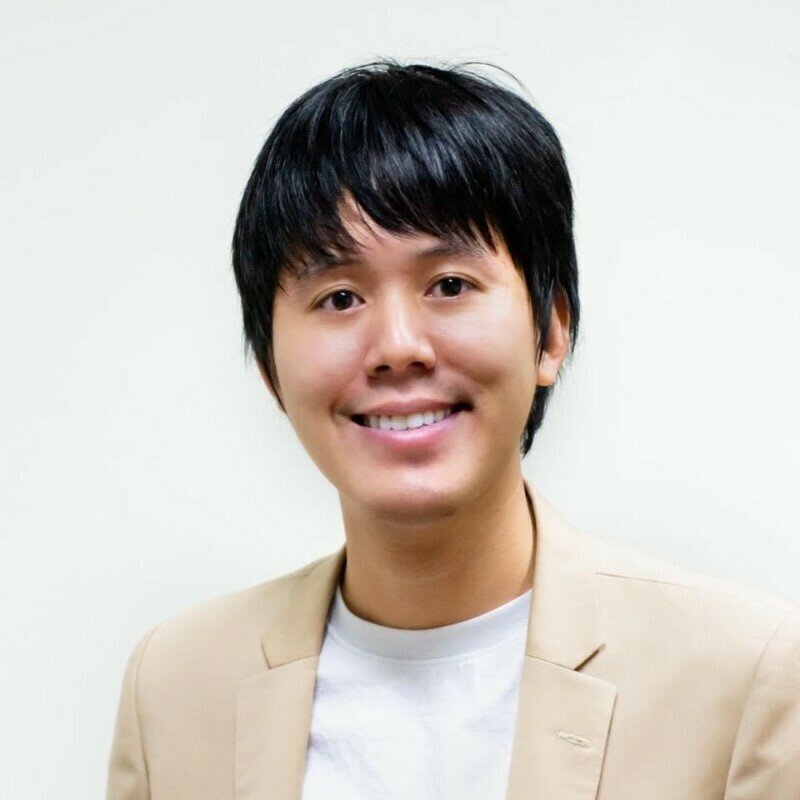


- Introduction - What is a simulation?
- Case I: Periodically-driven thermalized quantum systems
- Case II: Fermion Sampling
- Does it matter?
Outline
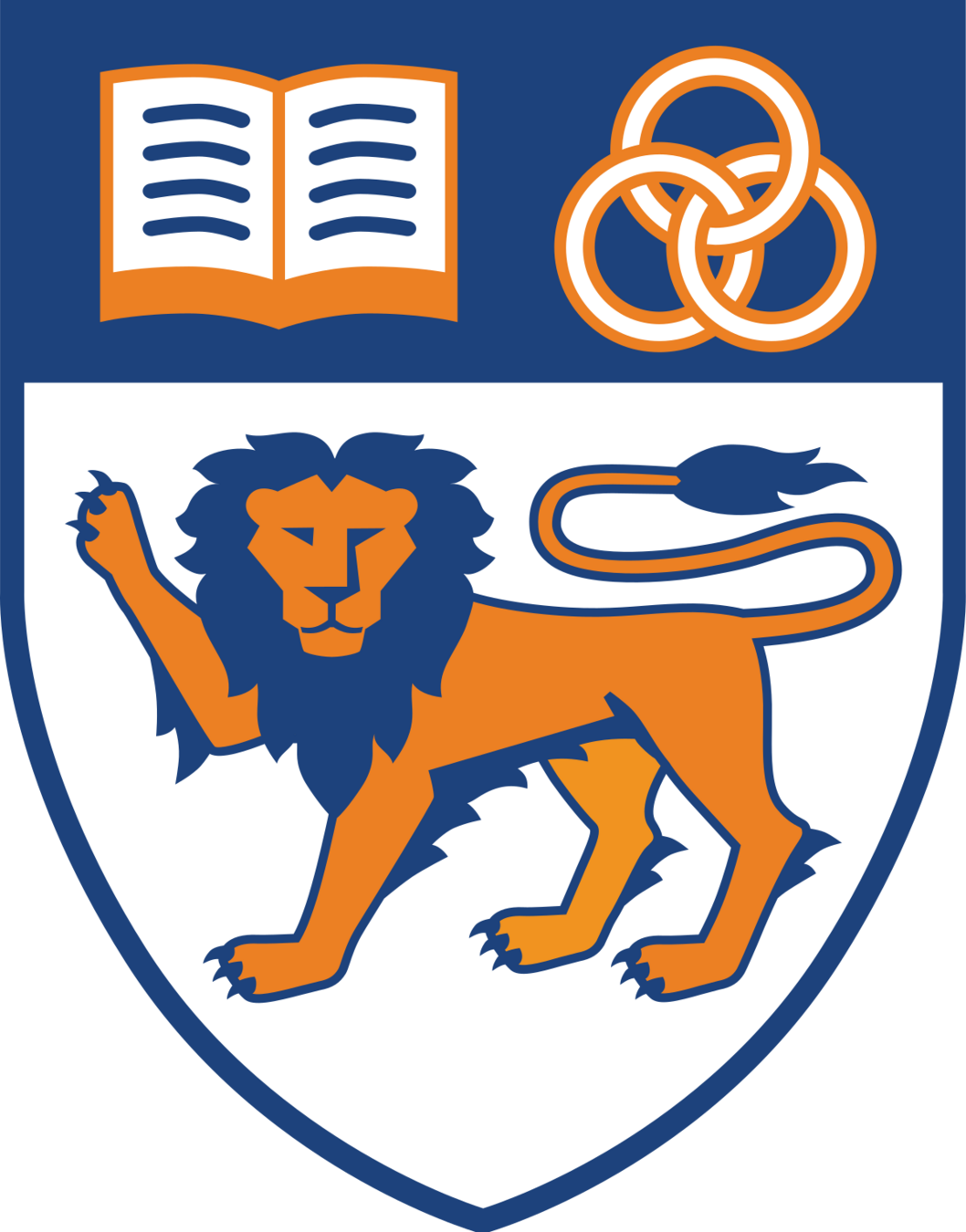
Periodically-Driven Thermalized Quantum Systems
Time-dependent Hamiltonian with a periodic driving
Floquet operator
Floquet Hamiltonian
Multiple periods \(M\) of evolutions until thermalize
External drive
Periodically-Driven Thermalized Quantum Systems
External drive
In what sense a closed quantum system thermalize?
Subsystem thermalization
Floquet eigenstate thermalization hypothesis (ETH)
Observables' statistics are well described by a unitary matrix randomly drawn from the circular orthogonal ensemble
Time-reversal symmetry
Periodically-Driven Thermalized Quantum Systems

Commuting quantum circuit
We show
- Anticoncentration of \(M \gg 2\pi/ET \) periods of COE evolutions
- Worst-case hardness of strong simulation
Undriven
Driven
Kim et al., PRE (2014)
Lazarides et al., PRE (2014)
Mori et al., PRL (2016)
The Role of Drive
- ETH applies to a wider part of the energy spectrum
- Long range effective interaction (Magnus expansion analysis)
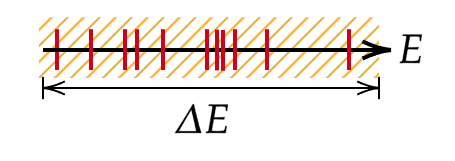
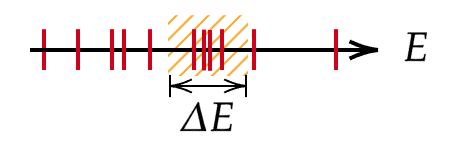
- We numerically show that the eigenstate statistics are approximated well by COE statistics and anti-concentrate (close to the Porter-Thomas distribution ) for the driven disordered Ising chain and driven Bose-Hubbard model
The Role of Drive
Evidences of quantum sampling advantage for driven, thermalized quantum systems by anti-concentration and the worst-case hardness
Not clear if average-case hardness holds because random matrix instances are not the same as the physical instances
- Introduction - What is a simulation?
- Case I: Periodically-driven thermalized quantum systems
- Case II: Fermion Sampling
- Does it matter?
Outline
Michał Oszmaniec, ND, Mauro E. Morales, Zoltán Zimborás, PRX Quantum 3, 020328 (2022)




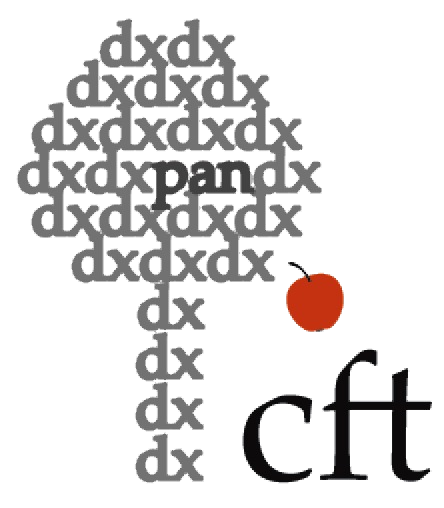

Fermionic Linear Optics (FLO)
Even parity
Odd parity
FLO gates AKA Matchgates
(Valiant, SIAM J Comput 2002)
Non-example
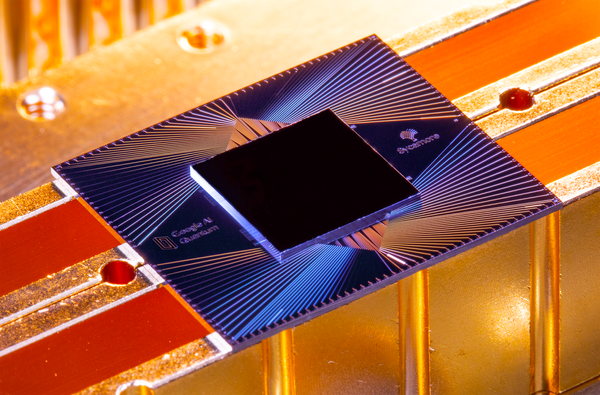
Classical Intractability?
Classical sampler \(\mathcal{C}\)
Anti-concentration?
Ability to approximately compute \(p_{\bf 0} = |\langle {\bf 0}|V_{\mathrm{FLO}}|{\bf 0}\rangle|^2\) for most \(V_{\mathrm{FLO}}\)

This is easy!
Jordan-Wigner
FLO
Free-fermionic evolution
Fermion Sampling
- FLO with computational-basis input state admits strong simulation (compute \(p_{\bf x}\) up to logarithmic number of decimals)
- Not the case with non-Gaussian (magic) input state; strong simulation is #P-hard (cf. Ivanov, PRA 2017)
- Our work shows that weak simulation is also hard
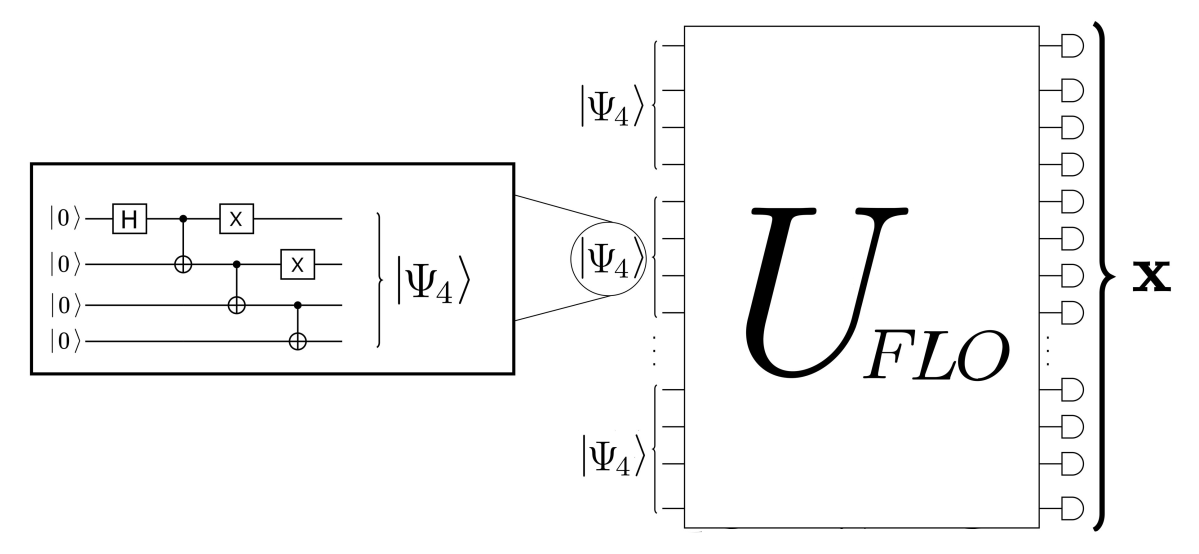
Fermion Sampling
We analytically show both anti-concentration and average-case hardness, the two ingredients needed in the proof of sampling quantum advantage
- SO(\(2n\)) for FLO
- U(\(n\)) for passive (number-preserving) FLO
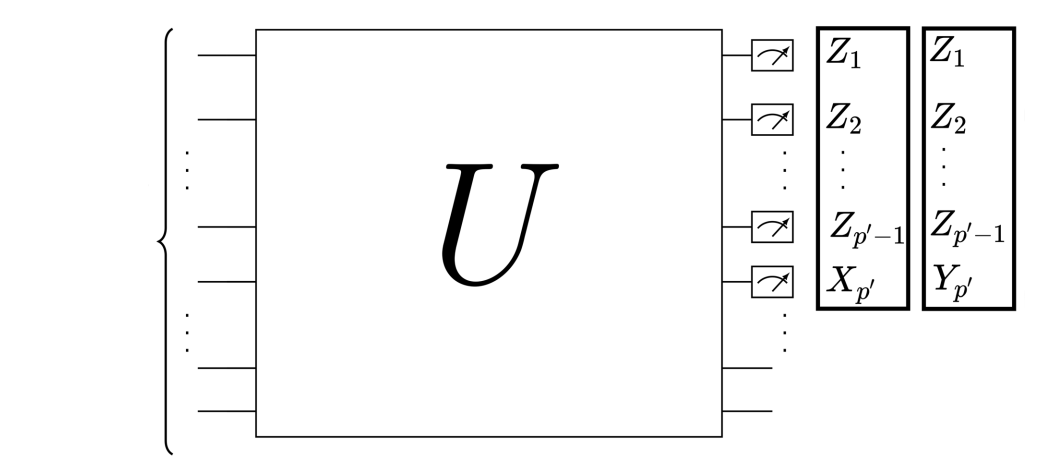
- The low dimensionality also allows an efficient tomography of the FLO circuit using single-mode input states and product measurements
- Introduction - What is a simulation?
- Case I: Periodically-driven thermalized quantum systems
- Case II: Fermion Sampling
- Does it matter?
Outline
- Variational quantum algorithm (VQA)
- Hybrid classical-quantum algorithm
- Generate distribution that is hard to sample from classically, but heuristic optimization by classical computers
Cerezo et al., Nat. Rev. Phys. (2021)
Does It Matter for "Real" Tasks?
* Semi-informed personal opinion
-
Optimization problems and quantum machine learning
- Mapping to unnatural instances of NP problems e.g. factoring
- Repertoire of hard tasks for cryptographic uses e.g. Blockchain agreement arXiv:2305.19865
Provable quantum advantage, or weaker one (advantageous compared to existing classical algorithms e.g. exponential speedup by Shor's algorithm)
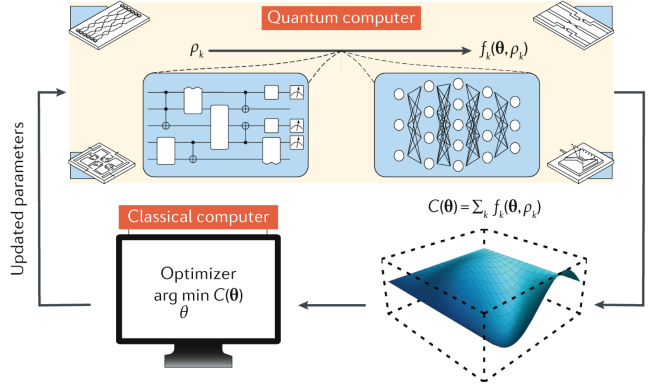
Summary
- Simulating \(U|\psi\rangle\) = Sampling from \(|\langle {\bf x}|U|\psi\rangle|^2\) (Weak simulation)
- The standard argument for sampling quantum advantage requires statistical data of the ensemble \(\{U_{\alpha}\}_{\alpha}\), namely anti-concentration and hardness "on average" (most instances)
- Driven thermalized quantum systems are candidates that may provide quantum advantage
- Fermion Sampling provides strong hardness guarantees, comparable to those of random circuit sampling but with smaller gate sets
- So far it is not clear that proofs of quantum advantage for application-oriented tasks such as optimization and machine learning are actually relevant to real-world applications
Tent Rock National Monument 2017

Extra Slides

50-100 qubits
1,000
10,000
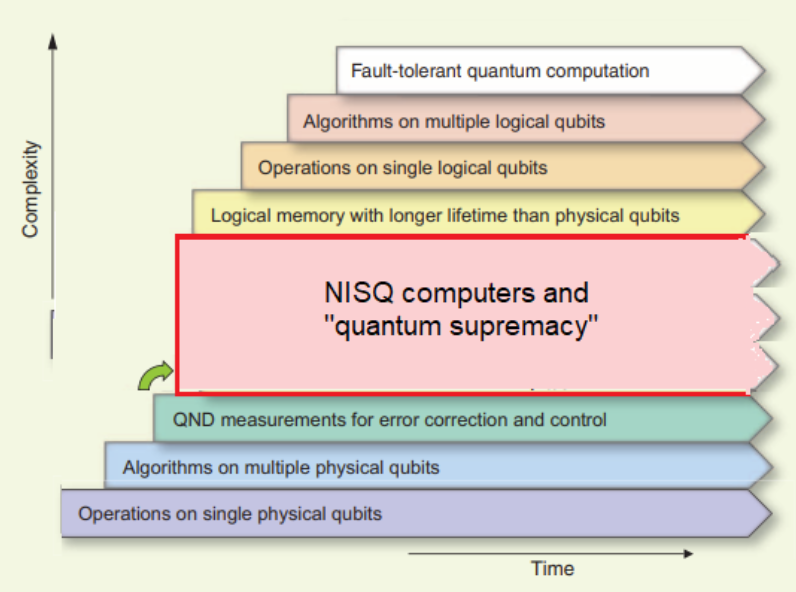
1,000,000
...
Fault-tolerant, universal quantum computing
Gil Kalai, modified from Devoret and Schoelkpf, Science (2013)
Noisy, intermediate-scale quantum (NISQ) devices
Commercially-relevant applications, unambiguous quantum advantage
10 years?
A Quantum Future

Codebreaking
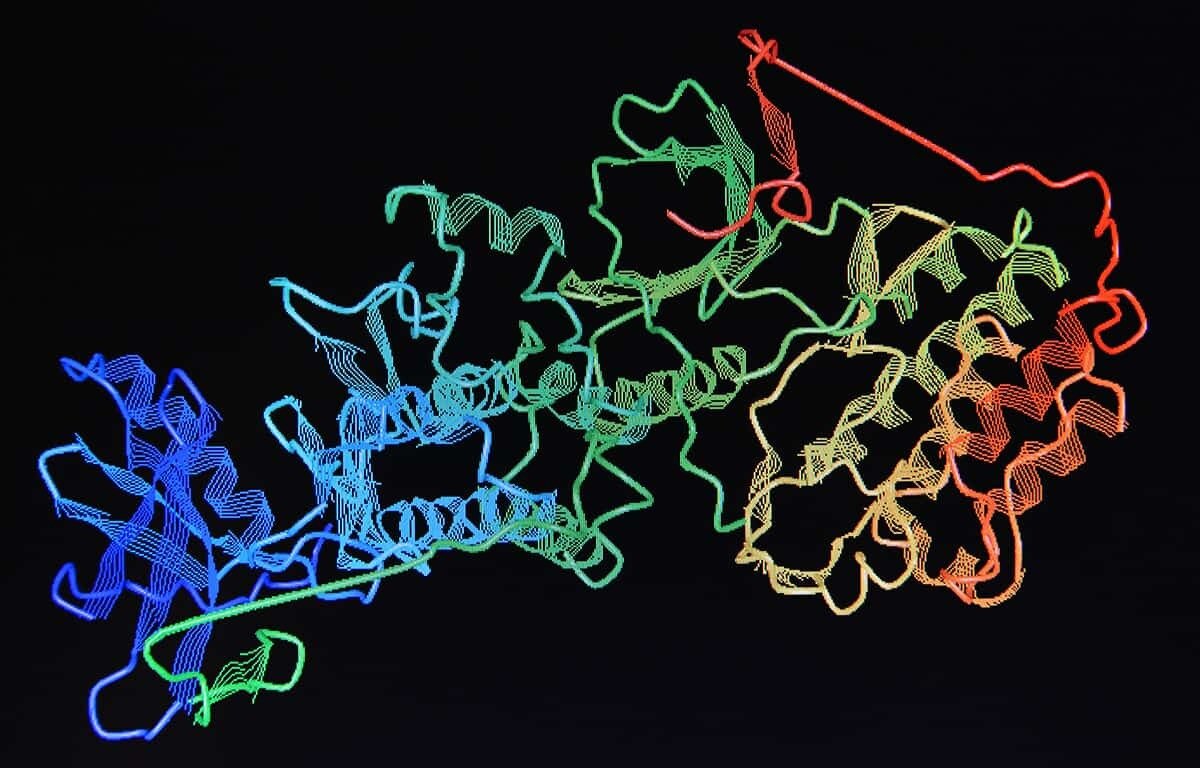
Quantum chemistry simulation
Modified from Bremner, QIP2018

Immanuel Bloch's group
Quantum simulations are natural, useful, and appear to be hard for classical computers.
Choi et al., Sci. 2016 uses cold atoms in optical lattices to compute many-body localization transition in 2D, which cannot be efficiently done with existing numerical techniques
But are they provably hard?
Fermionic Linear Optics (FLO)
Reminder
Identify computational basis states with occupation number states

Jordan-Wigner
CAR
\(f_j^{\dagger}\) creates a fermion at site \(j\)
Pauli exclusion
Fermionic Linear Optics (FLO)
cf. Dirac's gamma matrices
Majoranas

Non-example
\(Z\!\otimes\! Z\) interaction is not FLO
FLO Hamiltonians are quadratic
Antisymmetric
Fermionic Linear Optics (FLO)
Generators of rotations SO(\(2n\))
(Defining representation)
Antisymmetric

Manipulating \(2n\times 2n\) matrices instead of \(2^n\times 2^n\) matrices!
- Only need to specify the correlation matrix (2nd moments)
- All higher moments can be extracted from \(\Sigma\) via Wick's theorem
\(\rho = (|0\rangle\langle 0|)^{\otimes n}\) is a fermionic Gaussian state
\(l^2\)-distance to the uniform distribution:
\(\Vert p-p_{\mathrm{unif}}\Vert^2 = Z - \displaystyle{\frac{1}{2^n}} = Z-Z_{\mathrm{unif}}\)
\(p_{\bf{x}}(U)\) anti-concentrates if
Implies \(\Pr\left(p_{{\bf x}} \ge \displaystyle{\frac{\beta}{2^n}}\right) \ge \alpha(1-\beta)^2 \) via the Paley-Zygmund inequality
Anti-concentration
Modified from Dalzell et al., PRX Quantum 2022
Sum of projectors onto irreps by Schur's lemma under nice conditions
- SO(\(2n\)) for FLO
- U(\(n\)) for passive (number-preserving) FLO
Anti-concentration
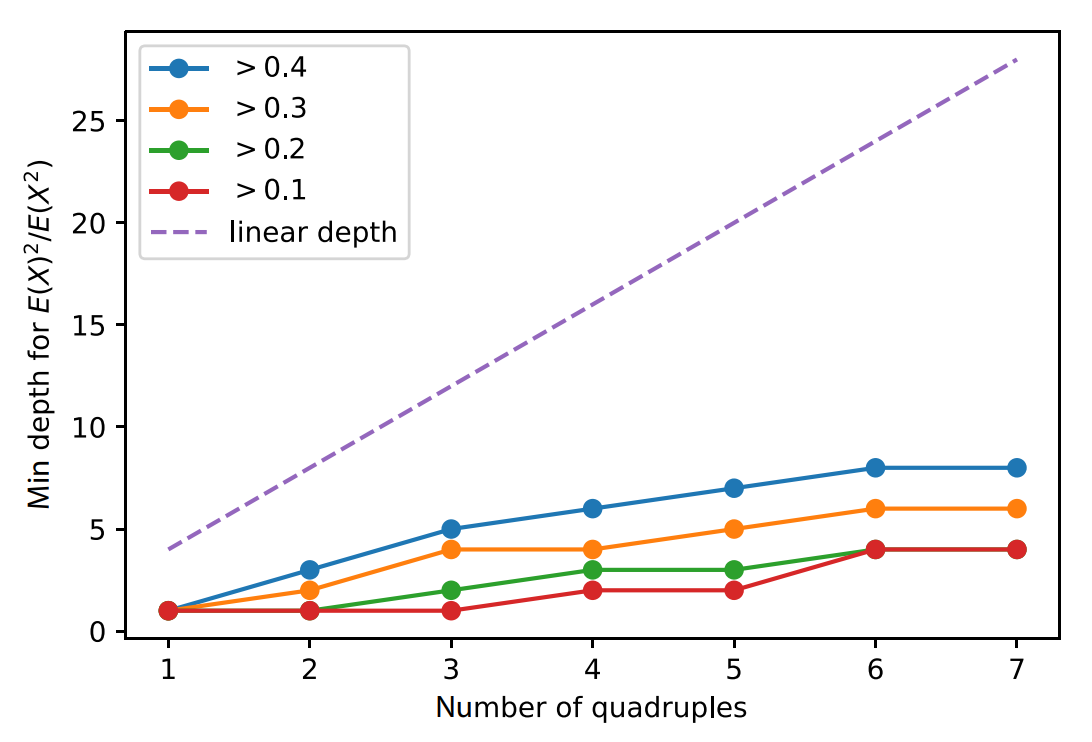
- Numerics suggest that random FLO circuits anti-concentrate in sub-linear depth
Worst-to-average-case reduction
- There exists a "worst-case circuit" \(V_0\) for which \(p_{\bf 0} = |\langle \mathbf{0}|V_0|\Psi\rangle|^2\) is #P-hard to approximate
- Deform to average-case (Haar random) circuits where \(p_{\bf 0} (\theta)= |\langle \mathbf{0}|V(\theta)|\Psi\rangle|^2\) is a polynomial of low-degree \(q\)
- Sample \(\gtrsim q\) points (some can be errorneous\(\iff\)robustness) and recover \(p_{\bf 0}(\theta)\) via Berlekamp–Welch
- Plug in \(\theta = 0\) to solve a #P-hard problem!
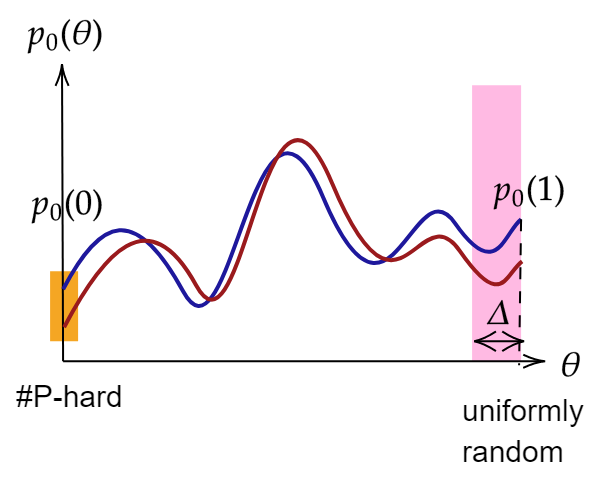
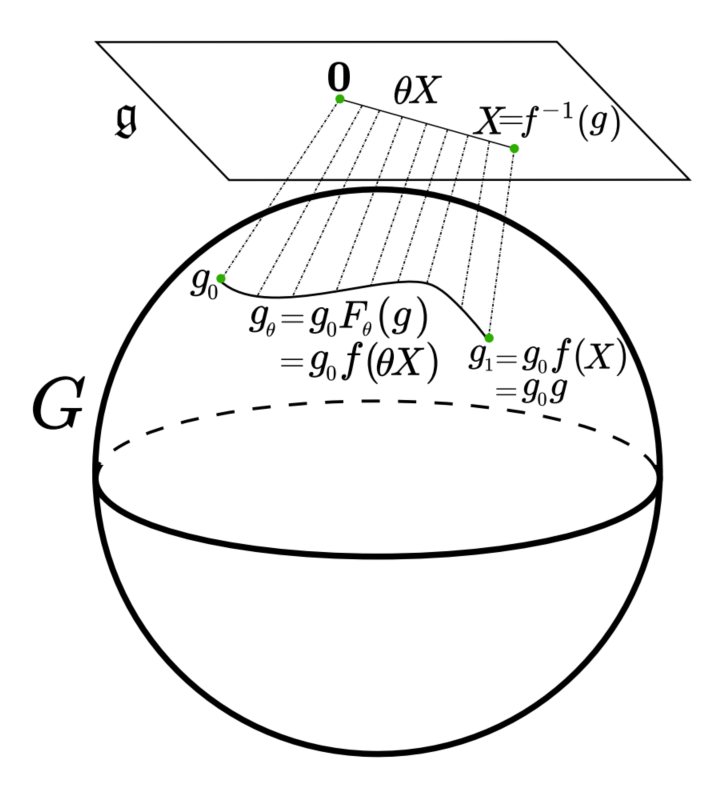
Unitary Paths

First idea: truncated exponential path
Movassagh 2019
Truncation gives rise to a non-unitary operator

Better idea: Cayley path
Unitary
Hermitian
Hardness Guarantees
| Quantum advantage scheme | Robustness of avg-case hardness (additive error) |
Anti-concentration |
|---|---|---|
| Boson Sampling | ||
| Random circuit sampling (Google layout) | ||
| Fermion Sampling |



Bouland et al., FOCS 2021